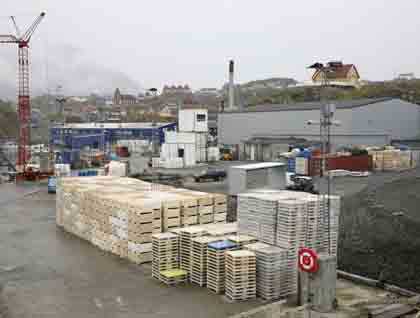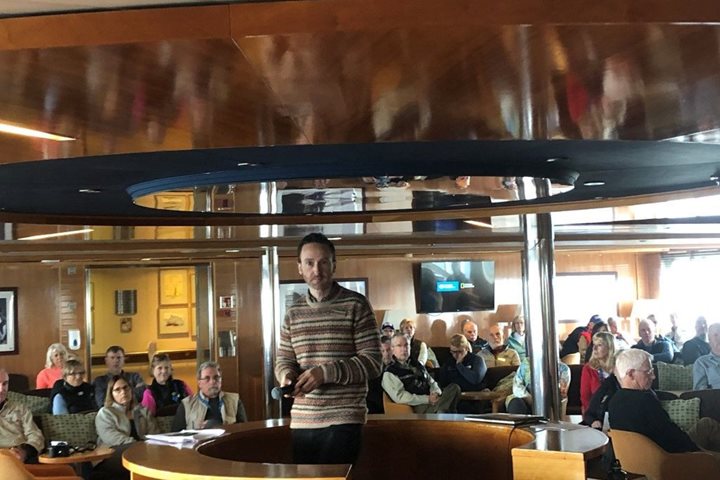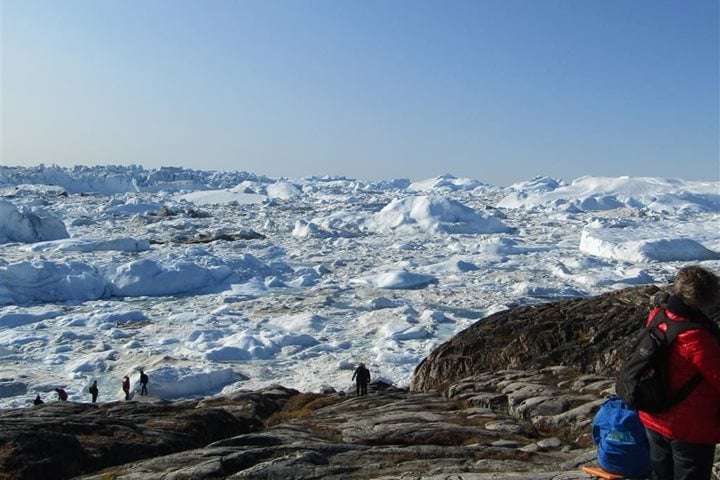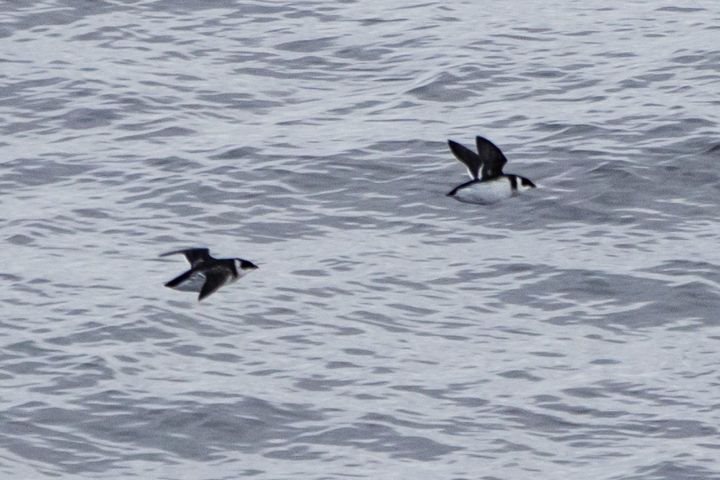It was early morning. Fulmars, perfectly mirrored in the unruffled water, glided with consummate skill. A low band of light gray fog insinuated itself into the numerous, ice-rasped inlets, fuelled by a light breeze. We were coasting toward Sisimiut, Greenland’s second largest settlement whose multi-coloured buildings present a kaleidoscopic contrast to the earthy, dark landscape in which it is set, jewel-like. This is a remote, isolated place where connection and access to the outside world is dictated, not by modern technologies, but by the pulses and rhythms of the weather. One can be stranded here for days in the town’s small airport where fog can roll in and envelop in minutes, dashing hopes of a speedy return to family and friends.
Following breakfast we departed the ship and set out on a variety of hikes to explore both the town of Sisimiut itself and its environs. Small groups of hunter-gatherers first arrived in this area over 4,000 years ago. Known as the Saqqaq, they had spread down along the west coast of Greenland. Specialising in the exploitation of marine resources including small whales, seals, and fish, they fine-tuned their hunting skills and adapted to the rugged landscape which is peppered with their temporary settlement sites. The town’s museum has a wide array of locally found artifacts on display. Through these we caught a glimpse of their ancient nomadic lifestyle.
Built in 1775, the town’s church is the second oldest in Greenland. The picturesque town and surrounding landscape kept the photographers busy capturing the rich textured tapestry of built and natural heritage, while our naturalists detailed a selection of local birds including phalaropes, wheatears, and snow buntings.
Hikes to the nearby Tele Islands afforded the opportunity to explore a number of 17th century sod-houses and whale blubber storage sheds. Sisimiut was an important whaling base for centuries. Other ancient structures consisted of stone built graves, many centuries old, some of which still contained human bone remains. Rocks were festooned with a variety of lichens including pixie cups and rock tripe.
National Geographic Explorer sailed from Sisimiut at 1 p.m., bound for Baffin Bay. The silver gray light and smooth sea made for perfect wildlife spotting and during the afternoon, and late evening a number of actively feeding minke whales and harp seals were observed.







